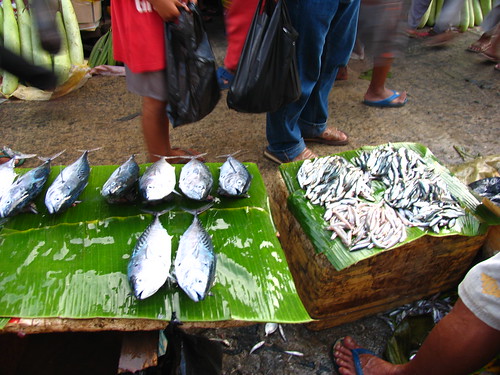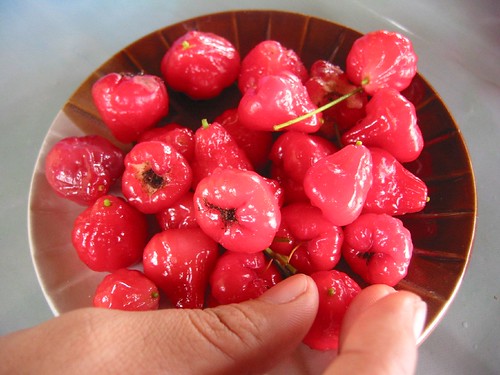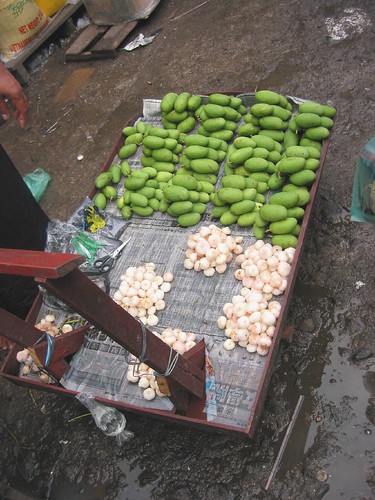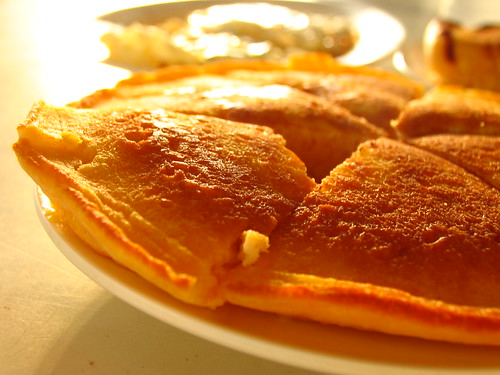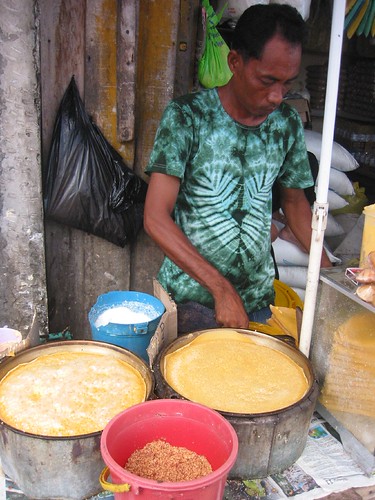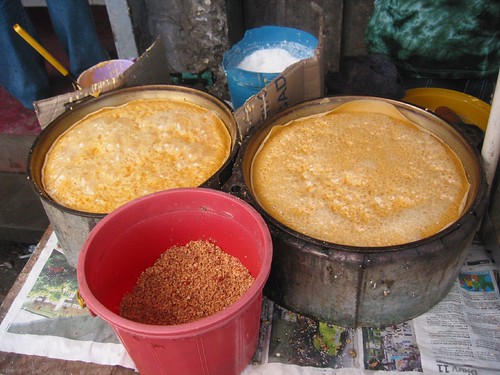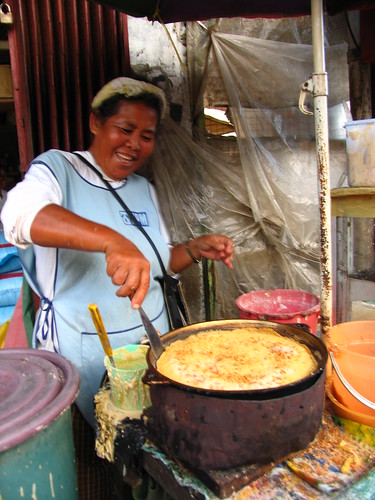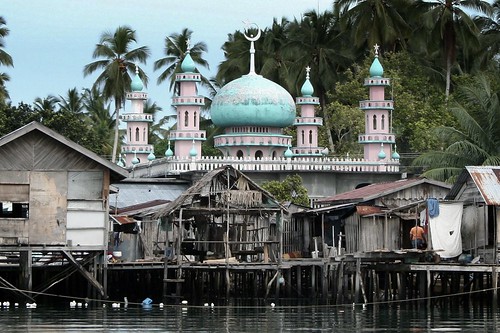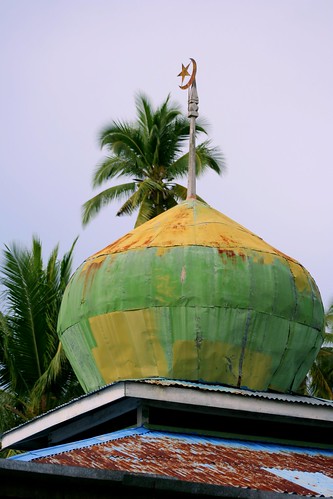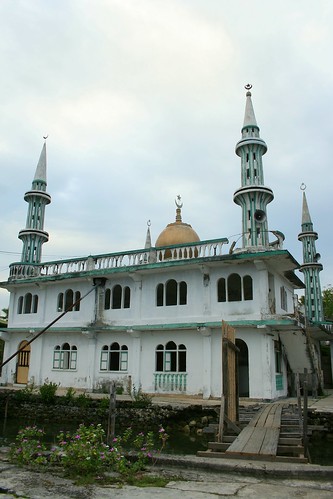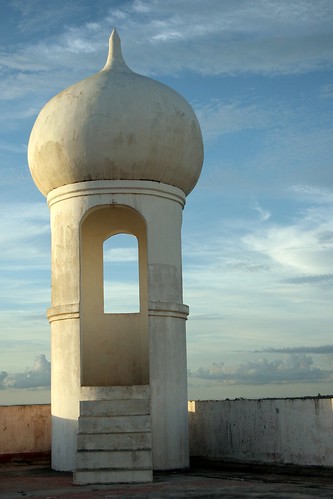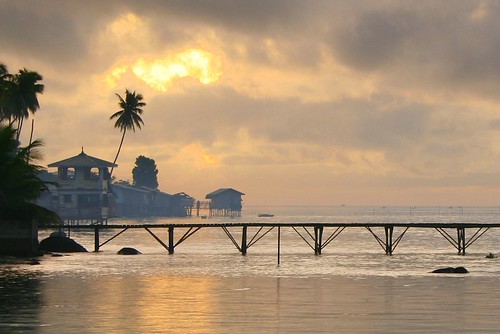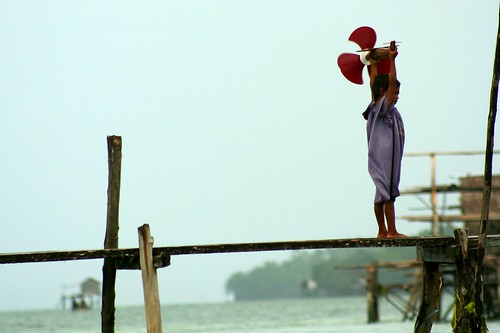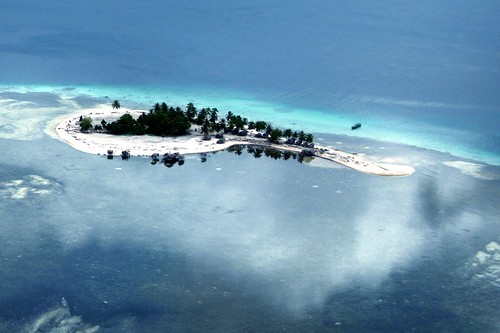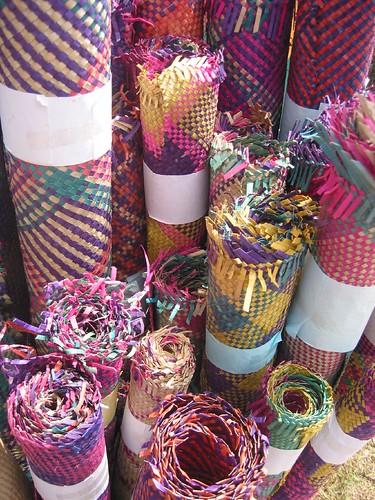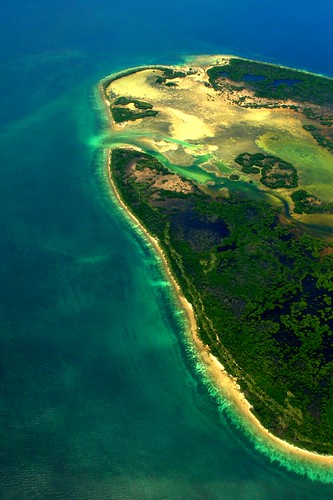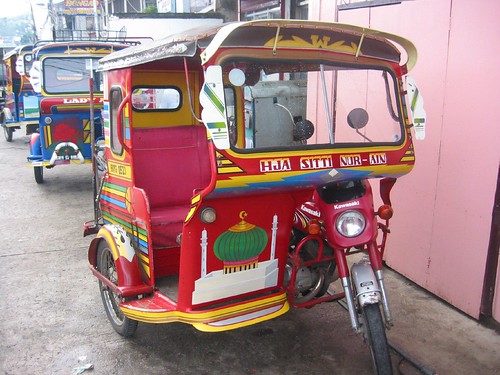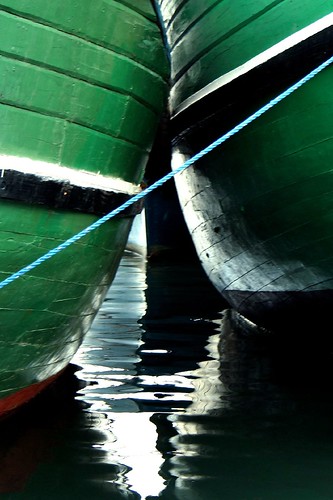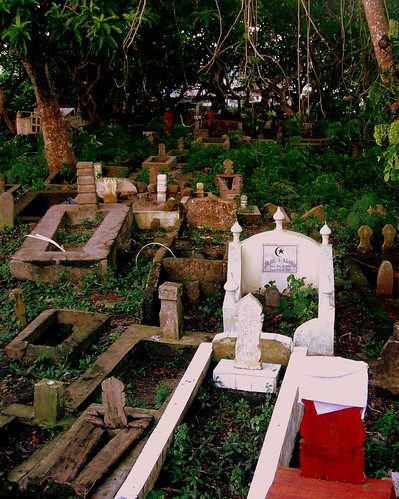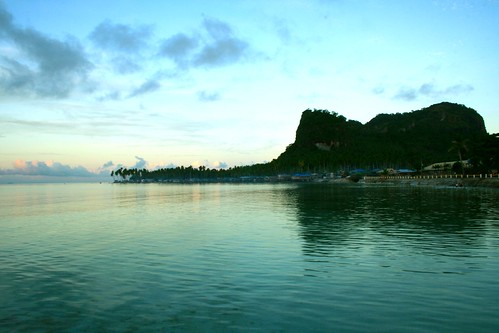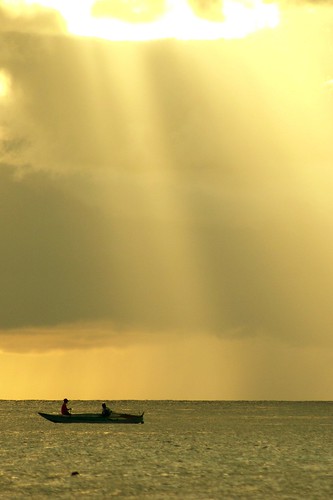a tale of the exotic- the Bongao Chinese Pier
With more than 7,000 islands, the Philippines has to be intrinsically linked to the water. It is not even a choice. From ancient history to the present time, the ocean is a lifeline, offering an almost endless source of opportunities, challenges and histories.

the Chinese Pier is the center of commerce of Bongao, Tawi-Tawi (photo taken by my wife)
Canon PowerShot Pro1, 1/640s, f/4.0, 18.3mm

an interisland passenger boat arriving at the Chinese Pier
Canon EOS 350D Digital, 1/80s, f/5.6, 55mm, ISO 100
Where people congregated, societies developed. Richness and luxury were not strange concepts in pre-Hispanic times. Records, however sparse, pointed to commercial centers in the Philippines that thrived on the trade of merchandise like gold, silk and spices, with merchants from China, the Middle East and the Malay kingdoms. The common thread among these townships was that they sprung along a coastline, around a bay or even at a river delta. These embankments provided natural and safe harbors for maritime vessels and easy access to the open sea, facilitating the movements and exchanges of people, products and even ideas.
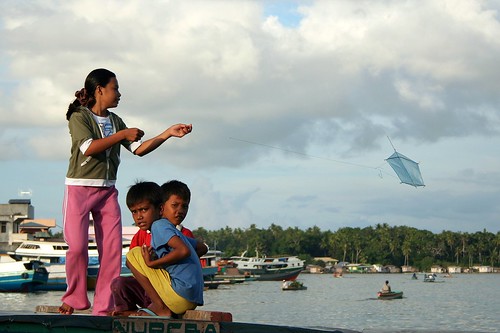
girl flying a kite on top of a boat at the Chinese Pier
Canon EOS 350D Digital, 1/500s, f/5.6, 55mm, ISO 100
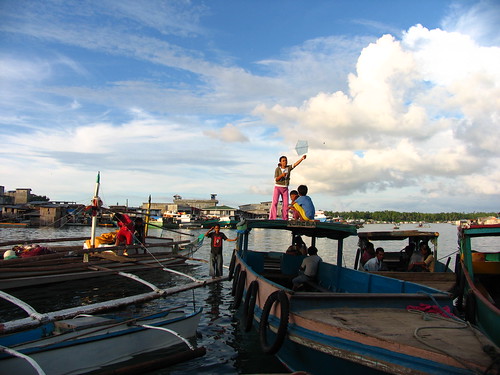
the kiteflyer- photographic version by my wife
Canon PowerShot Pro1, 1/125s, f/2.8, 7.2 mm
Over time, these port towns grew in population and income, becoming major cities in the process. Think of Cebu, Cagayan, or Iloilo in the Visayas or Manila, Batangas and San Fernando in Luzon. In faraway north, the rough currents were no deterrent to the rise of Basco in Batanes where to this date, heavy interactions with Formosan Chinese continue. Down south, in the archipelago of Sulu, important barter hubs like Jolo and Isabela prospered from contacts primarily with the Arabs, the Indonesian and Malaysian people.
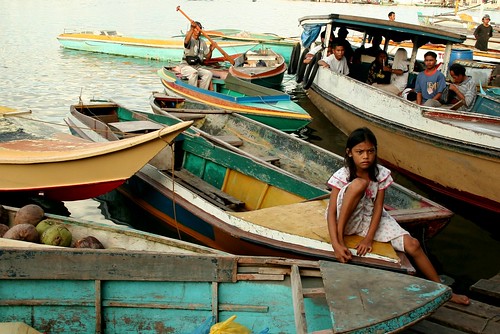
Canon EOS 350D Digital, 1/250s, f/3.5, 18mm, ISO 100
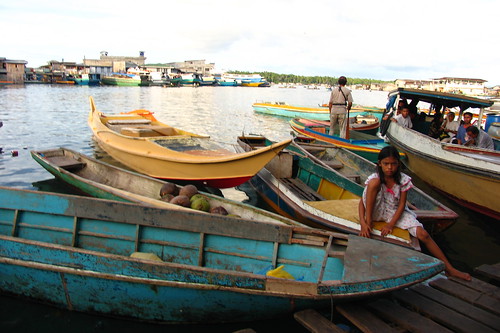
the same girl- photographic version of my wife
Canon PowerShot Pro1, 1/60s, f/2.4, 7.2 mm
For Tawi-Tawi, Philippines' southernmost province, no port has a more prime rank in pre-colonial trade than one in Bongao, the Chinese Pier. Its name alone is a testament to its engagement with foreigners. This group of islands is also where Islam was first introduced by the Sheik Karimul Makdum in 1380. Over the centuries, Arab missionaries integrated themselves in the Tawi-Tawi's communities, ultimately spreading the faith to the rest of Mindanao.
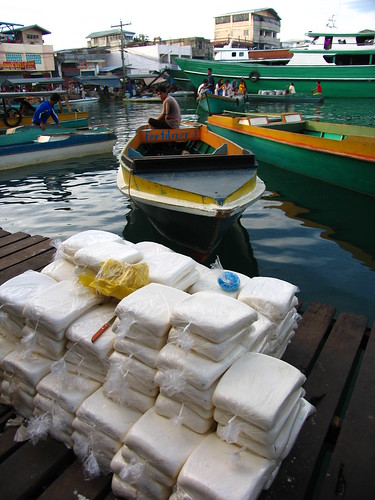
panggi for sale- photo by my wife
Canon PowerShot Pro1, 1/60s, f/2.4, 7.2 mm
Spending time in the Chinese Pier is an immersion of the Tawi-Tawi way of life. The sea is still their highway and boats their cars. Business is to a significant degree transacted on the temper outriggers by Bajao fishermen bringing their catch of the day, Samal vendors displaying native delicacies like panggi, Tausug traders showing off bartered wares from Malaysia and even Christian farmers seeking exchanges for their vegetables. Aside from being the port of entry of most people, the port is laced by eateries, stores and the public market at the seaside level. Within the wider arc of Chinese Pier, there are the banks, stores, mosques, government offices and schools. In a broad but realistic sense, Bongao rose from this floating market.
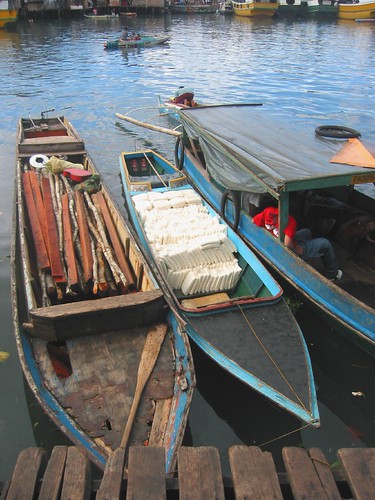
Lumber and cassava paste for sale at floating market
Canon PowerShot S40
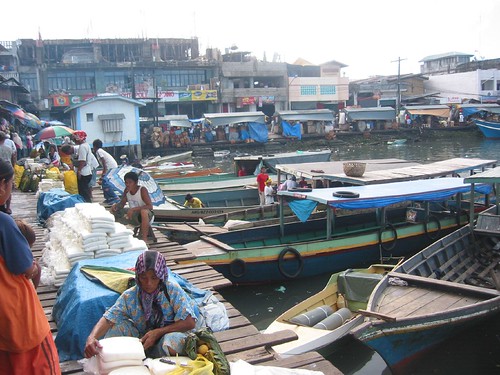
brisk sales of the panggi, a ground cassava staple of the native Sama and Badjaos
Canon PowerShot S40, 1/1000s, f/2.8, 7.1 mm
Having spent several working visits in Bongao, in 1991, 2005 and 2006, I notice one other thing. The Chinese Pier is used as the point of reference when giving directions. In the rapidly changing modern world that Tawi-Tawi is facing, the pier is a remaining constant. It will always be there.
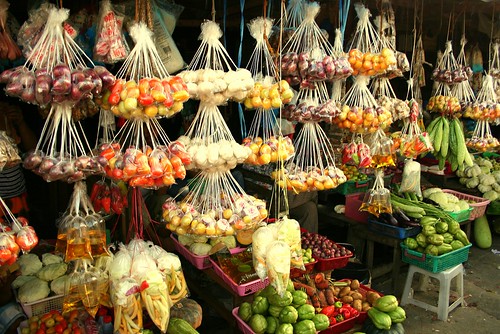
commoditized vegetables in the wet market by the Chinese Pier
Canon EOS 350D Digital, 1/60s, f/3.5, 18mm, ISO 100

port arrival- photo by my wife
Canon PowerShot Pro1, 1/60, f/2.4, 7.2 mm






